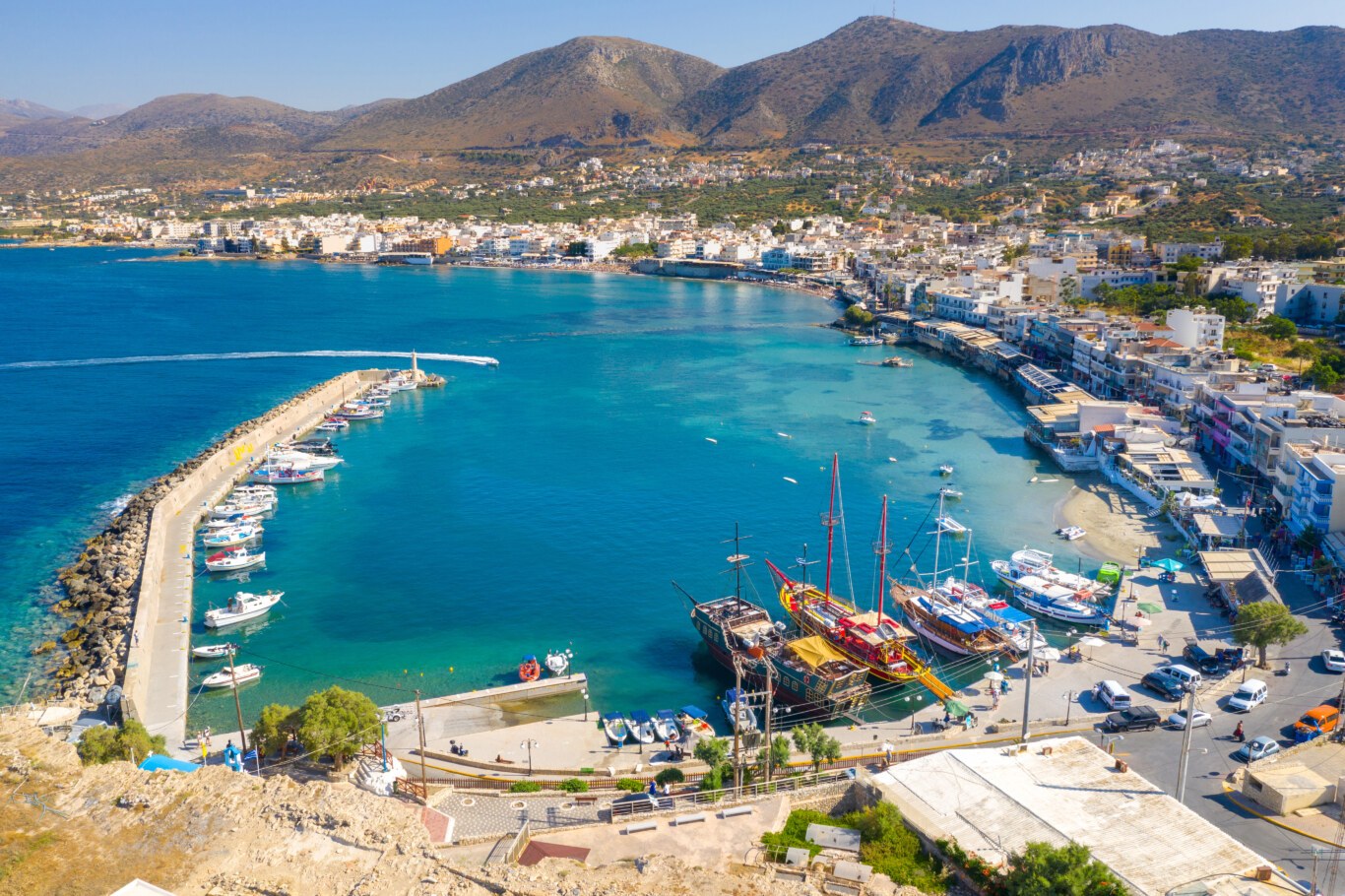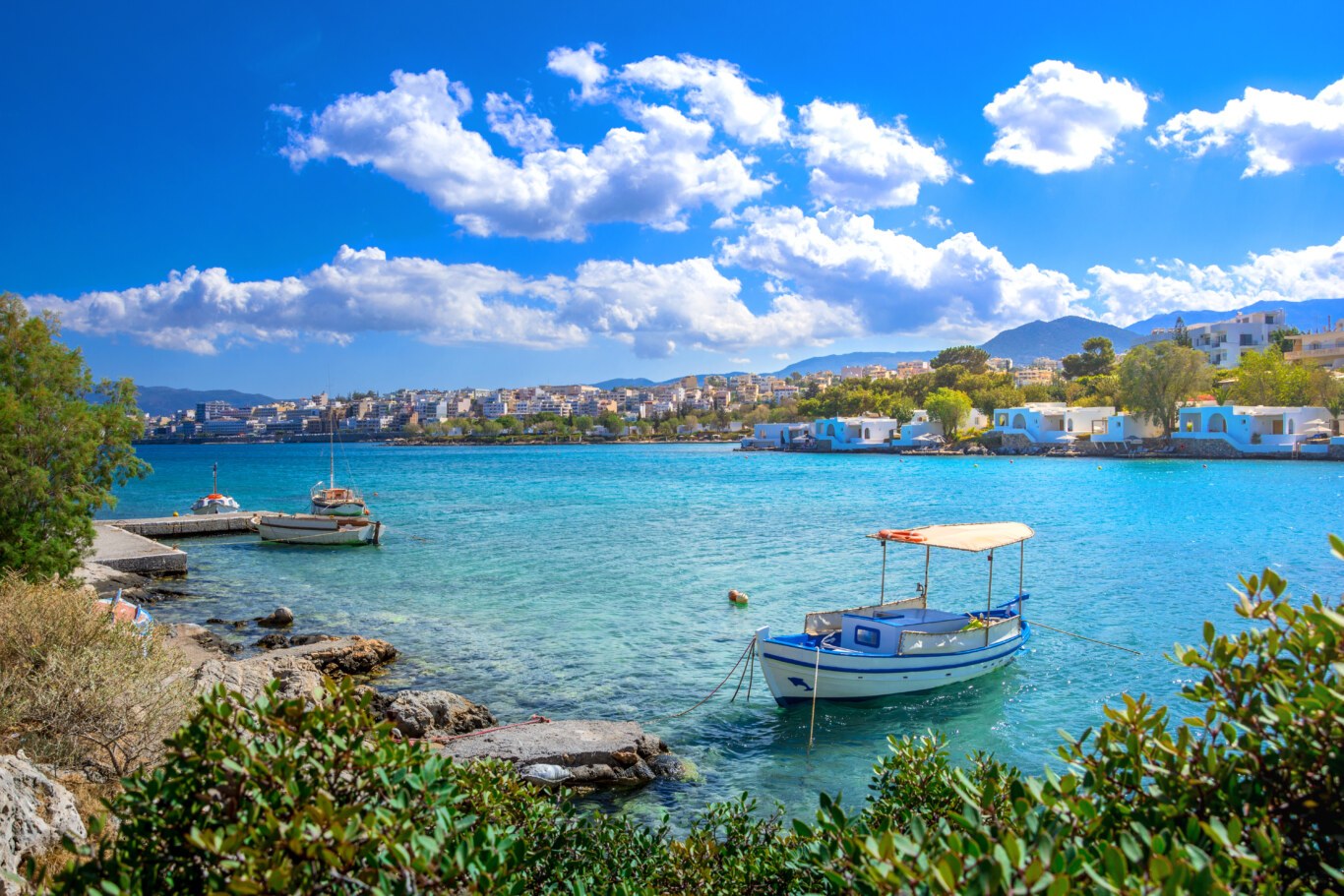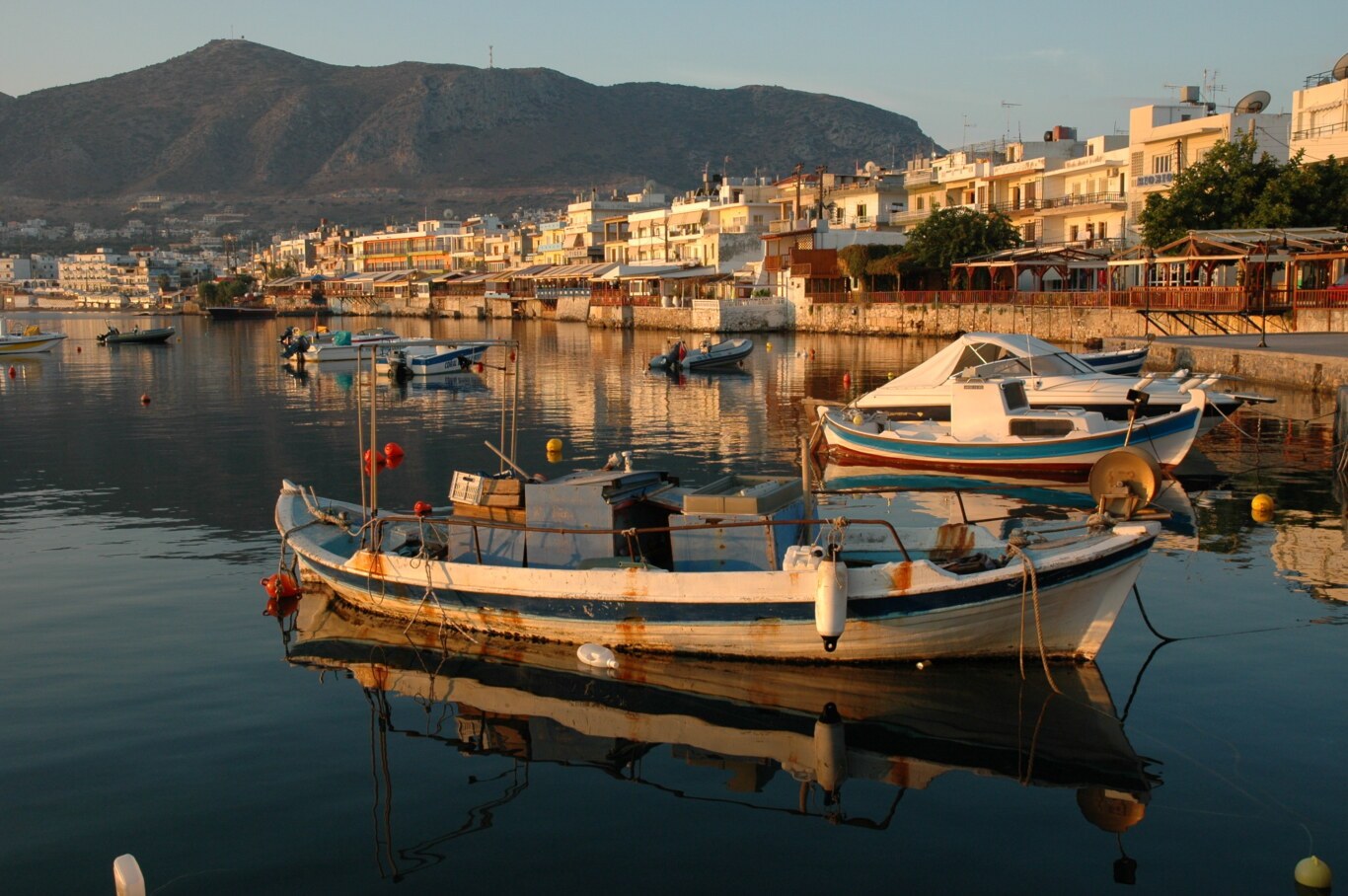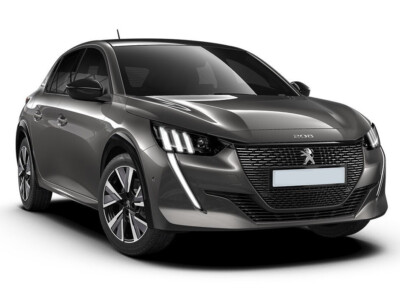Χερσόνησος
Hersonissos is a village in the Heraklion Prefecture of Crete, Located on the foot of Harakas hill, it is 25 km away from Heraklion and the inhabitants are mainly occupied in the tourism sector. It is a family-friendly destination, perfect for relaxation, but it also combines nightlife and tourist venues, all in one. Sandy beaches await for children and sunbathers, while many child activities are available as well. Hersonissos is well known for being very safe night & day, and it is considered one of the safest places in Crete.
Hersonissos is fully equipped with everything you may need: banks, ATMs, post office, drug stores, doctors, supermarkets, souvenir shops, boutiques, κλπ. Most shops are on the main road of Hersonissos. Accommodation choices are many here: from luxurious all-inclusive hotels and resorts, to small family-run hostels and B&Bs. Make sure to book your room in advance, as it is a high-tourism area, especially during July, August and September.
There are many restaurants in the area, and the choice of cuisines is quite large. From traditional Greek food and souvlaki, to Chinese and Italian, even Indian, Lebanese, you will have no problem satisfying your hunger! Cafes and bars are numerous, and partying lasts all the way to the small hours of the night.
Τι να κάνετε
Basilica of Kastri
In the 5th century, the early Christian basilica of Kastri was among the largest in Crete. Previously, a basilica destroyed by an earthquake stood in its place, and even earlier, a Hellenistic sanctuary. It was discovered only at the beginning of the 20th century, and excavations began in the 50s. For centuries, Castries has been “conserved” underground, so its mosaic floors with floral and geometric ornaments are well preserved. On the south side of the basilica is a rock-cut chapel. It is believed that this is the burial place of an outstanding clergyman or martyr. Next to the basilica is a small church of St. Paraskeva, the doors of which are always open.
Roman fountain
On the embankment of Hersonissos is one of the few surviving Roman monuments - the fountain of Sarakino. This is part of a large complex of similar structures and an ancient villa that has not survived to this day. The fountain is decorated with mosaics depicting a fishing scene, octopuses, birds and fish. If you look closely, you can discern many other plots. Based on the style and theme of the mosaics, the fountain dates back to the 2nd century. It fits into the modern life of Hersonissos - you can look at it and touch the past of Crete while walking around the city.
Aquaworld Aquarium
One of the city's most popular attractions is the Aquaworld Aquarium. Whole families come here to have fun surrounded by animals. Among the inhabitants are exotic fish and reptiles. But among other things, the aquarium is engaged in rescuing animals in difficult conditions.
Museum "Lychnostatis"
In 1992, the collector Giorgos Markakis founded the Lychnostatis open-air museum in Hersonissos, dedicated to the life and traditions of Crete. Here visitors immerse themselves in the world of Greek crafts and can visit a weaving workshop, a shepherd's hut and an exact copy of the house of wealthy Cretans, a winery, an oil mill and an apiary. There is a small chapel and a mill. The museum serves as a guide to the past of Crete and attracts all those interested in the culture and history of the island.
Ano Hersonissos
The old part of Hersonissos differs from the coastal one: here life flows measuredly. You can spend time wandering the narrow alleys and looking at the stone houses, and then visit two churches built in the Byzantine style. The center of Ano Hersonissos is a picturesque square, around which taverns of traditional Cretan cuisine are concentrated. In the summer season, live concerts with national dances and music are held here in the evenings.
The villages of Piskopiano and Koutouloufari
For those who plan to see the sights of Crete by car, from Hersonissos you can go on dozens of exciting routes. The villages of Piskopiano and Koutouloufari are located 2 km from the resort area. The first began its history during the Middle Ages and retained the traditional Cretan architecture. Worth a stroll through the streets of Piskopiano and visit the Museum of Rural Life with a collection of weaving art. And Koutulufari attracts with old houses with arched openings and picturesque courtyards.





